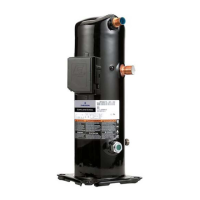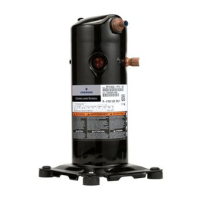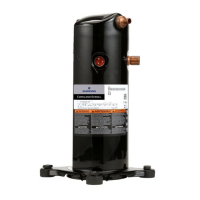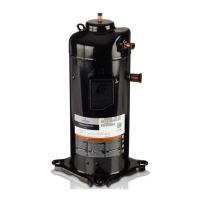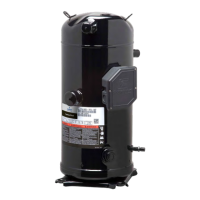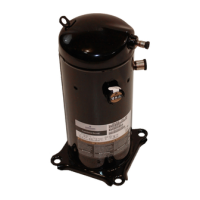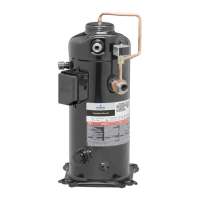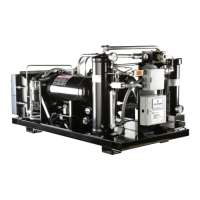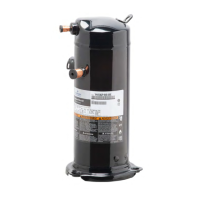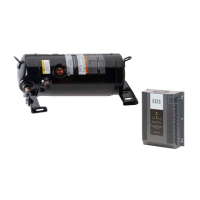Introduction
The ZPS*KC two-stage modulated Copeland Scroll™
compressors are ideally suited for commercial and light
commercial applications where a capacity stage
reduction and part-load efficiency are desired. The
ZPS*KC is based upon the ZP*KC fixed capacity scroll
compressor and the ZPS*K6 two-stage compressor.
(Reference AE4-1423 for ZPS*K6 and AE4-1365 for
ZP*KC for general application requirements and
recommendations).
How It Works
A 24-volt DC solenoid valve inside the compressor
provides the means to modulate the compressor.
When the solenoid valve is energized the compressor
is in full-load and when de-energized the compressor
is in part-load. When the ZPS*KC solenoid is
energized a 3-way solenoid valve provides pressure to
a lift ring assembly that is used to open and close the
scroll modulation ports. A single-speed motor
continues to run while the scroll modulates between
the two capacity stages. See Figure 1 for hardware
pictorial.
Figure 1 ZPS*KC
Capacity Control
The compression process of a scroll compressor
is described in AE4-1365, Figure 8. At any point in
the compression process, there are several pockets
within the scroll that are compressing gas. Modulation
is achieved by venting a portion of the gas in the first
suction pocket back to the low side of the compressor
thereby reducing the effective displacement of the
compressor. Full capacity is achieved by blocking
these ports, thus increasing the displacement to 100%.
When the solenoid is energized, the compressor is in
full-load or 100% of its capacity. When the solenoid
is de-energized the compressor is in part-load or
approximately 67% of its full-load capacity. The loading
and unloading of the two-stage scroll are done “on the
fly” without shutting off the motor between stages. The
unloaded mode default was chosen for two reasons:
1. It is expected that most run hours will be in a low
capacity, part-load mode.
2. It allows a simple two-stage thermostat to control
capacity through the second stage in both cooling and
heating.
Nomenclature
The model numbers of the Copeland Scroll
compressors include the approximate nominal 60Hz
capacity at AHRI operating conditions of 45°F(7.2°C)
evaporating temperature and 130°F (54.4°C)
condensing temperature. An example would be the
ZPS83KCE-TF5 which has 83,000 Btu/hr (24.3. kW) at
the above mentioned full-load condition. Both full and
part-load performance data are published throughout
the entire operating envelope and can be found in the
Online Product Information(OPI) at Emerson.com/OPI
APPLICATION CONSIDERATIONS
In most respects, the two-stage scroll will
operate like a standard scroll in both the high and
low capacity mode. The basic application guidelines
in AE4-1365 should be adhered to for ZPS*KC
compressors. There are a few important differences
outlined below that must be observed when designing
a system with the Copeland Scroll ZPS*KC two-stage
compressor.
Operating Envelope
The ZPS*KC compressor family is approved for use
with R410a only. The ZPS*KC compressors can
operate at full-load capacity throughout the entire
specified operating envelope, see Figure 2. There are
operating envelope limitations in part load. Contact
Application Engineering for more information. The
envelope represents acceptable operating conditions
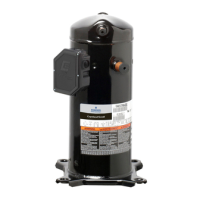
